The subject of interest stands on a small perch below the 11,240 ft. summit of Gardens Peak in the Rocky Mountains of Idaho. We are in similar positions and elevation. However the subject of interest and I are separated by 1/2 mile and a deep canyon.
The subject of interest is alone. I am not. World re-known guide Nappy Neaman, Adventurist Crist Cook, and I are on our 11th day of photographing Mountain Goats. My subject is a male yearling.
We are located only 15 miles from the towns of Ketchum and Sun Valley. However, no trails can be utilized to reach these perches. Our day starts at 4AM, and involves climbing for about two hours with 30-45 lbs (each) on our backs in order to reach our first shooting location. We will scramble up, down, and throughout areas named The Rock Garden, and The Secret Garden for another six hours before calling it a day.
We love this setting and like to claim we are sitting in our backyard. For the Mountain Goat this spot is their natural home at its southernmost point. The Mountain Goat’s native habitat are the Rocky and Cascade Mountains of North America – from Southeast Alaska to Central Idaho.
Mountain Goats are actually not goats. All goats wild and domestic, are part of the genus; Capra. Mountain Goats are the only (remaining) living species in the genus; Oreamnos. Mountain Goats are closely aligned with Gazelle and Antelope. All are members of the Bovidae family.
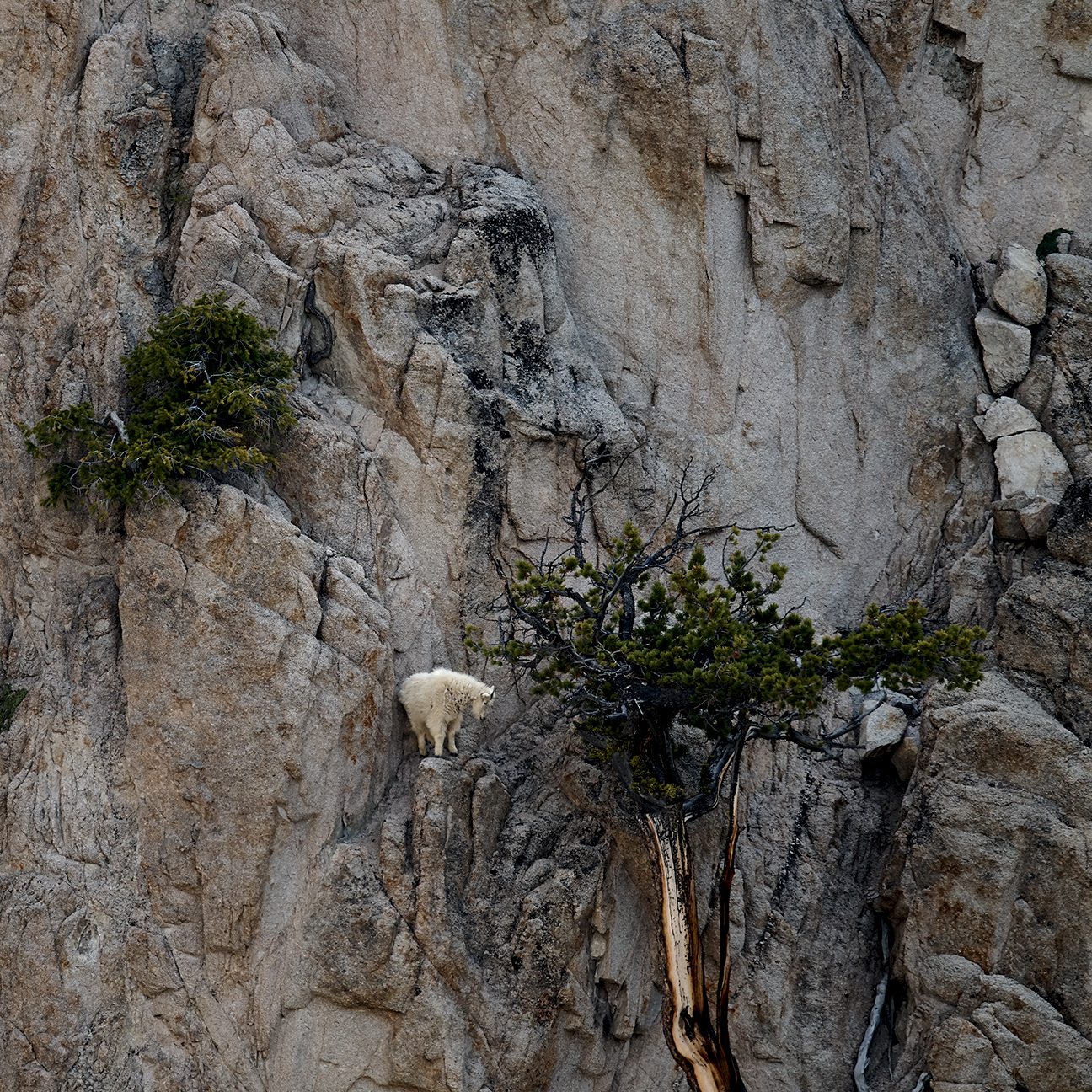
Mountain Goats are isolationists. They do not lend themselves to domestication in any form. Mountain Goats also tend to live in the higher and more rugged elevations of their habitat.
For those that live in or visit the Wood River Valley of Idaho, the Mountain Goat resides only a few miles from the center of town in any direction. The community has established many viewing points that offer the ability to see Mountain Goats from a distance with a spotting scope. However, a viewing up close without disturbing the Mountain Goat is an entirely different proposition.
Getting up close enough to capture high quality images involves dealing with a variety of challenges. Some combination of cross-country travel, rock scrambling, climbing, and the ability to carry up to 50 pounds of photographic gear is part of the mix.
To capture the image requires patience, an understanding of the daily habits of a Mountain Goat, the ability to photograph a fast-moving subject, and the the proper use of the light of day and its angle.
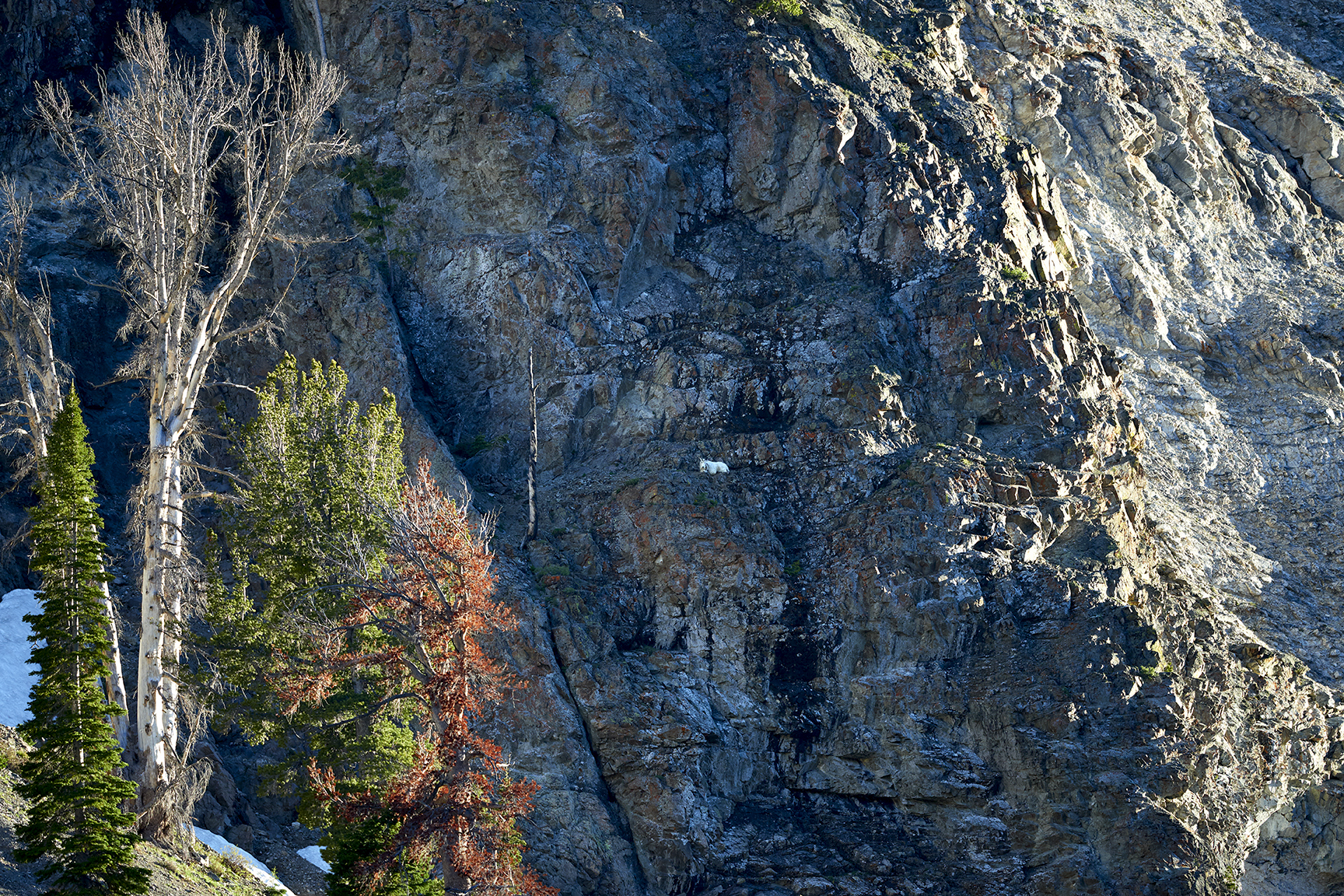
Mountain Goats are the largest Mammal in their habitat weighing anywhere from 100 – 300 lbs. All Mountain Goats have beards, short tails and long horns. The horns reveal growth rings as they remain on the goat for its entire life. Mountain Goats have padded four-toed hoofs with an additional sharp dew claw. The hoof, and dew claw combined with a powerful shoulder and neck allows the Mountain Goat to move nimbly through rocky terrain up to 60 degrees in angle.
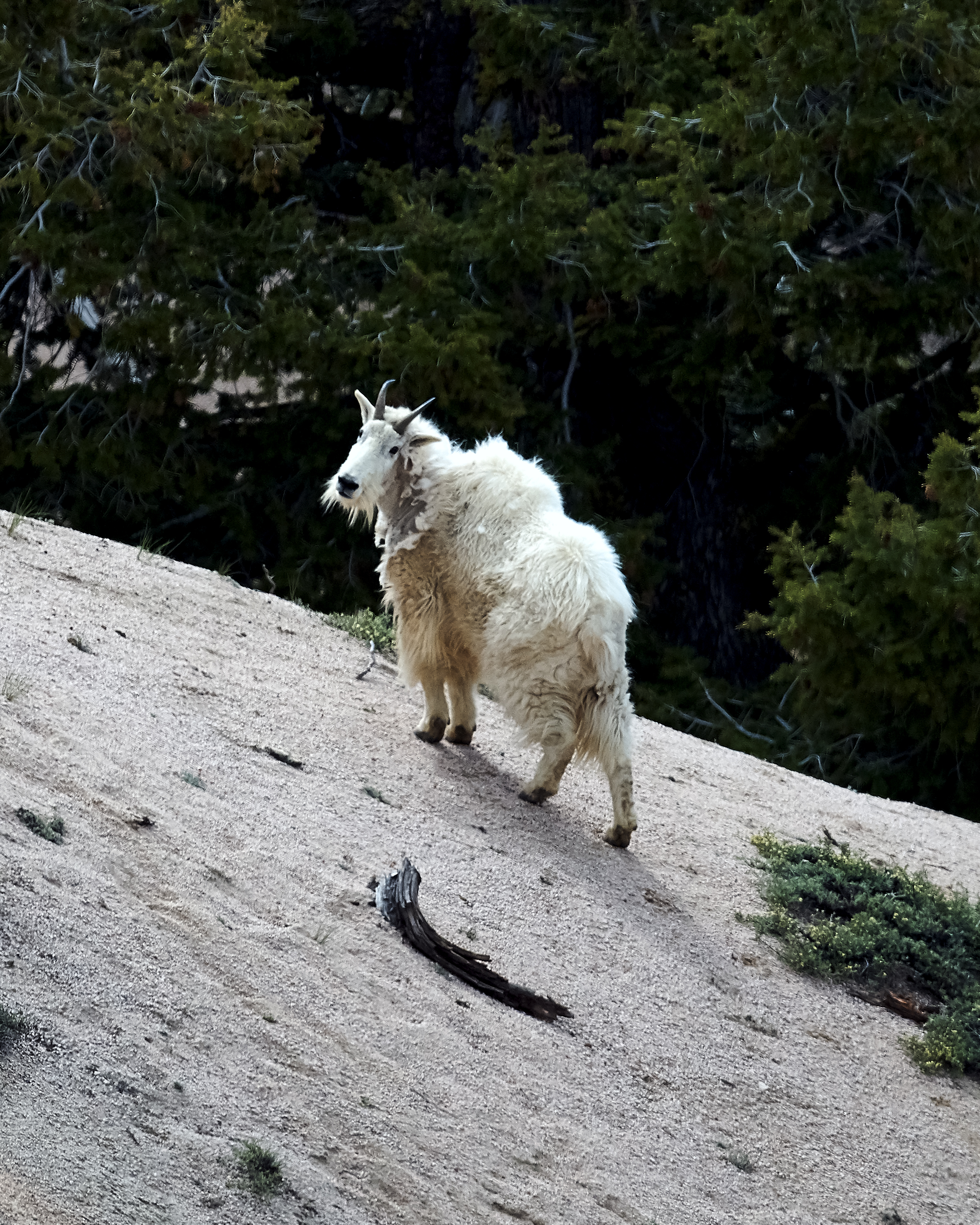
The Mountain Goat has a two-layered coat; a thick undercoat and a light fluffy overcoat. This kind of coat allows the Mountain Goat to survive direct exposure to -50 degree (f) temperatures and 100 M.P.H. winds.
In order to remain cool in the summer months, the Mountain Goat removes their coat by scraping it against rock. The coat regrows in time for cold weather.
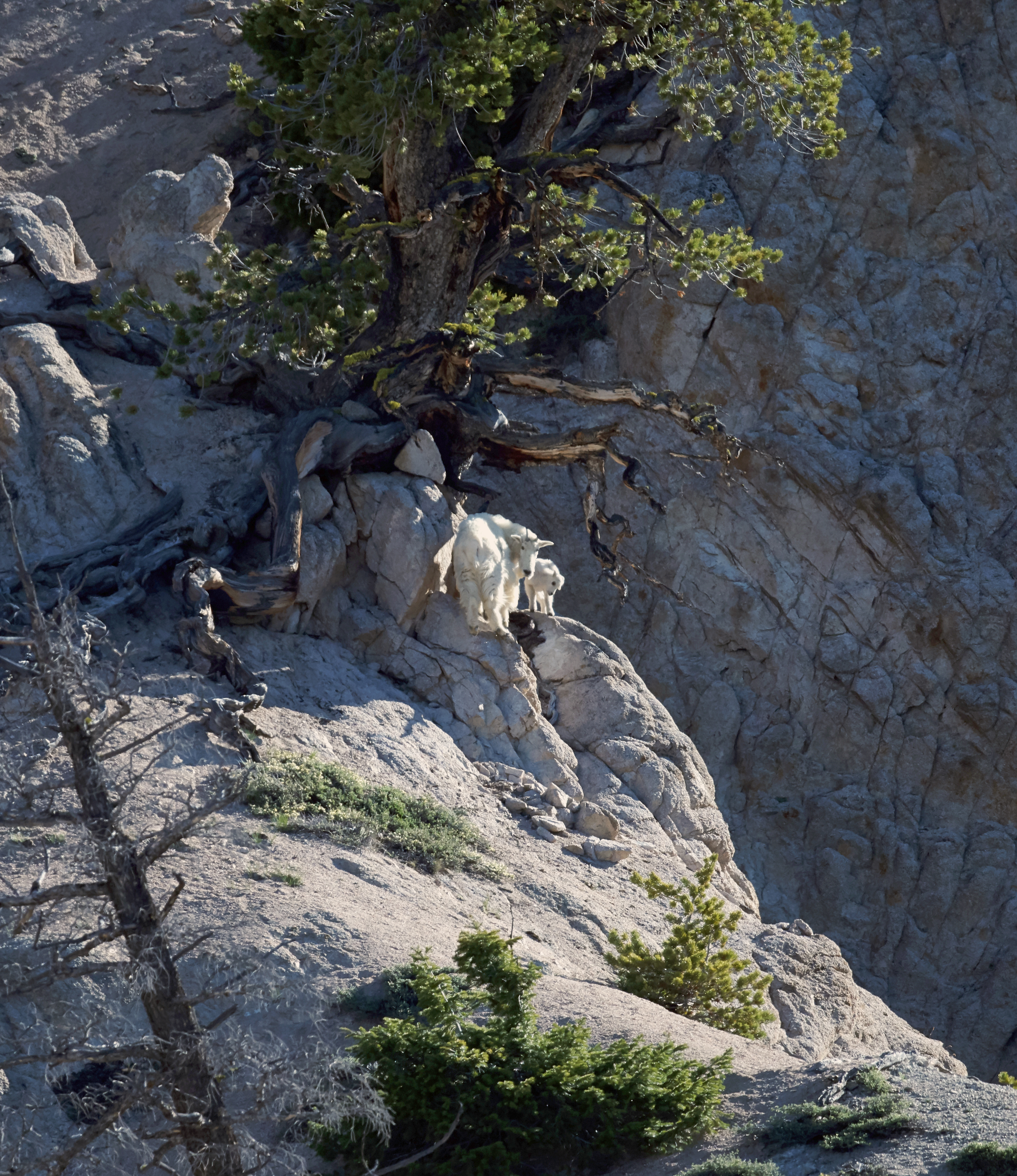
The female Mountain Goat gives birth to and raises offspring almost entirely on her own. Male Mountain Goats live mostly on their own. In the Wood River Valley birthing occurs most commonly from the last week of May through the first week of June.
It is during the first weeks of life the Mountain Goat is its most vulnerable. Its primary predator – the Golden Eagle – view Baby Mountain Goats as a food source, to be identified, picked up, dropped to their death, and consumed.
After a few days Baby Mountain Goats begin travel with Mom. It survives on Breast Milk and eventually learns to eat the mulch and lick the mineral salt that is their daily diet.
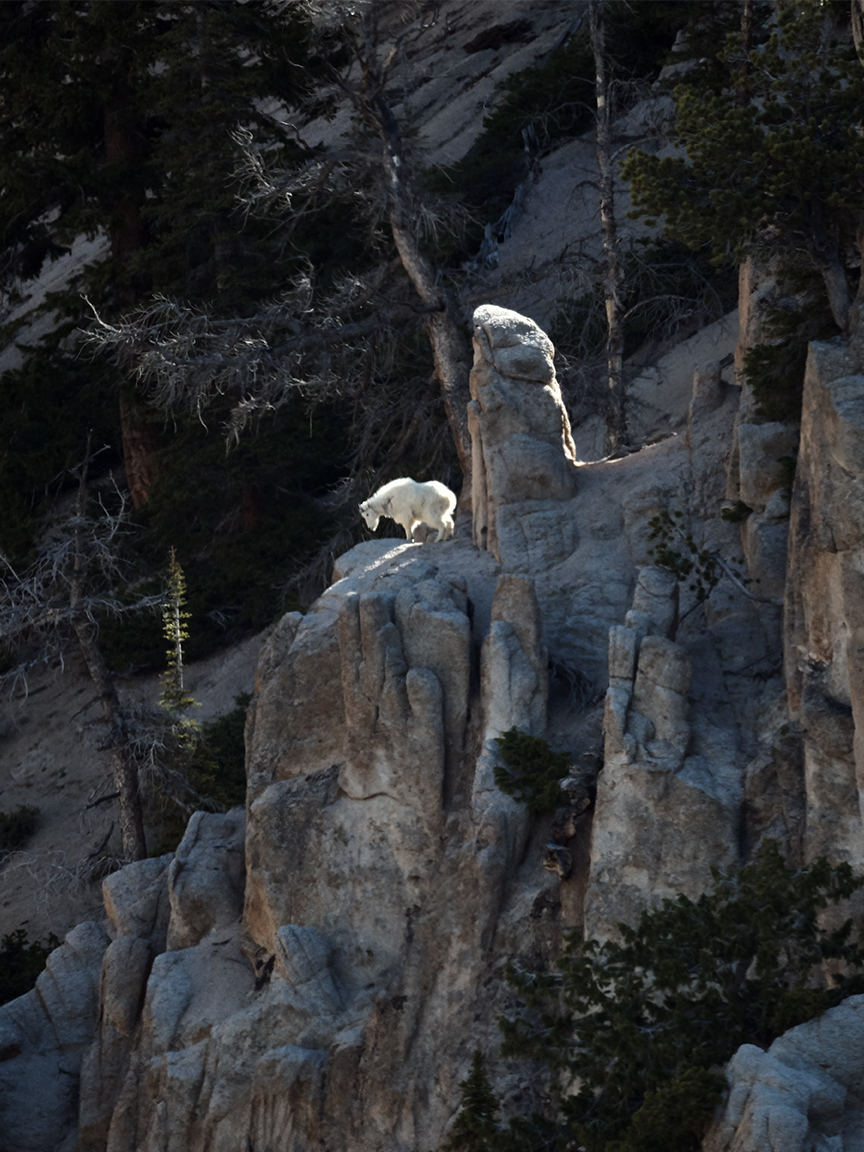
Baby Mountain Goats stay with Mom for their first few years. The moment a Baby Mountain Goat becomes an older sibling at one-year (a.k.a. Yearling) it becomes a possible deadly relative that Mom will keep at a safe distance. Why? The Yearling has horns and the baby’s skull is not fully formed. For a while the Yearling is the problem child scolded by Mom, but not driven away.
It is not uncommon to see Mom, Baby, Yearling and Two Year-old sitting, traveling, and bedding down together.
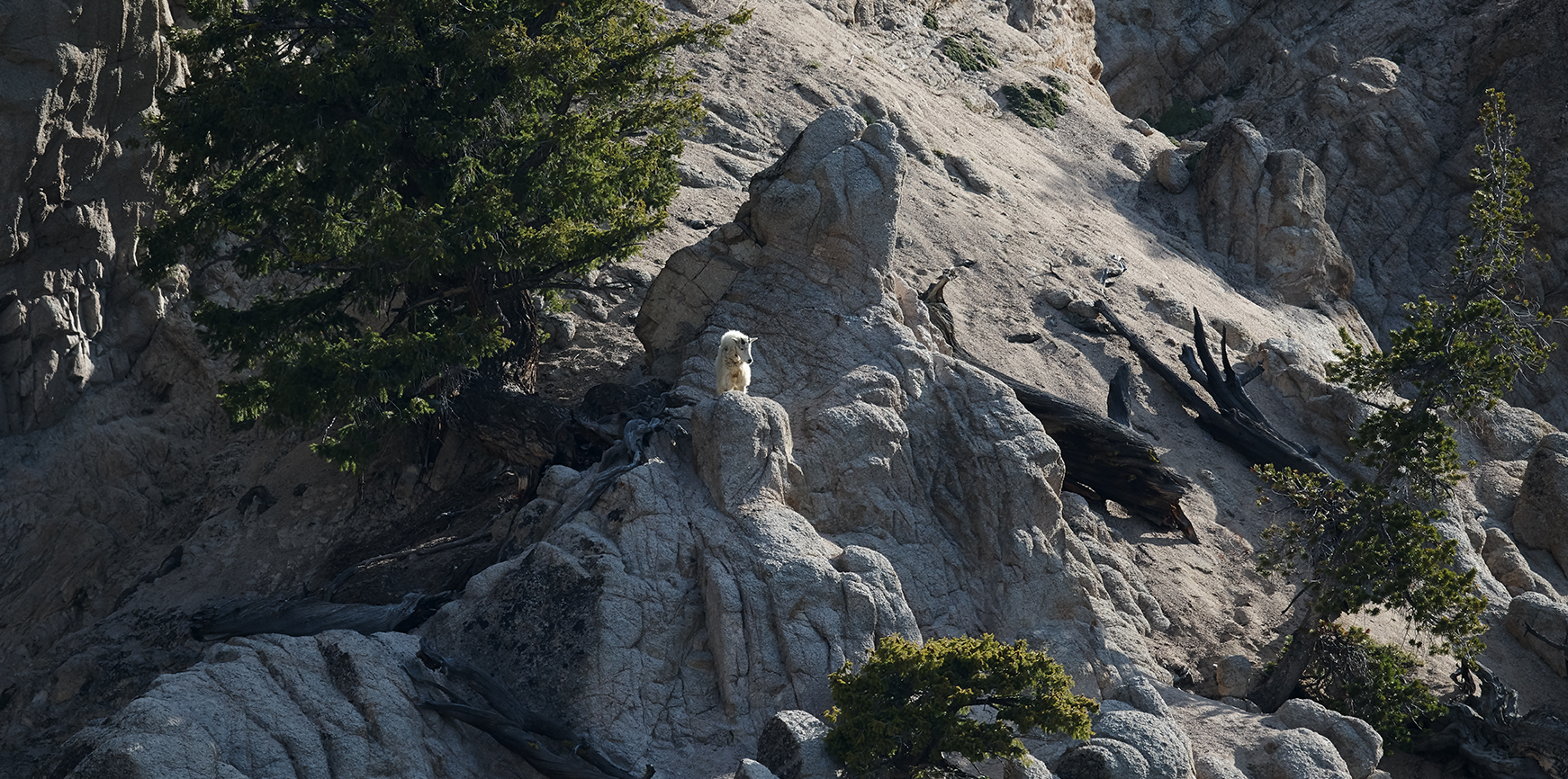
The Yearling can often be observed out-front viewing the territory ahead, while in close proximity to Mom and Baby.
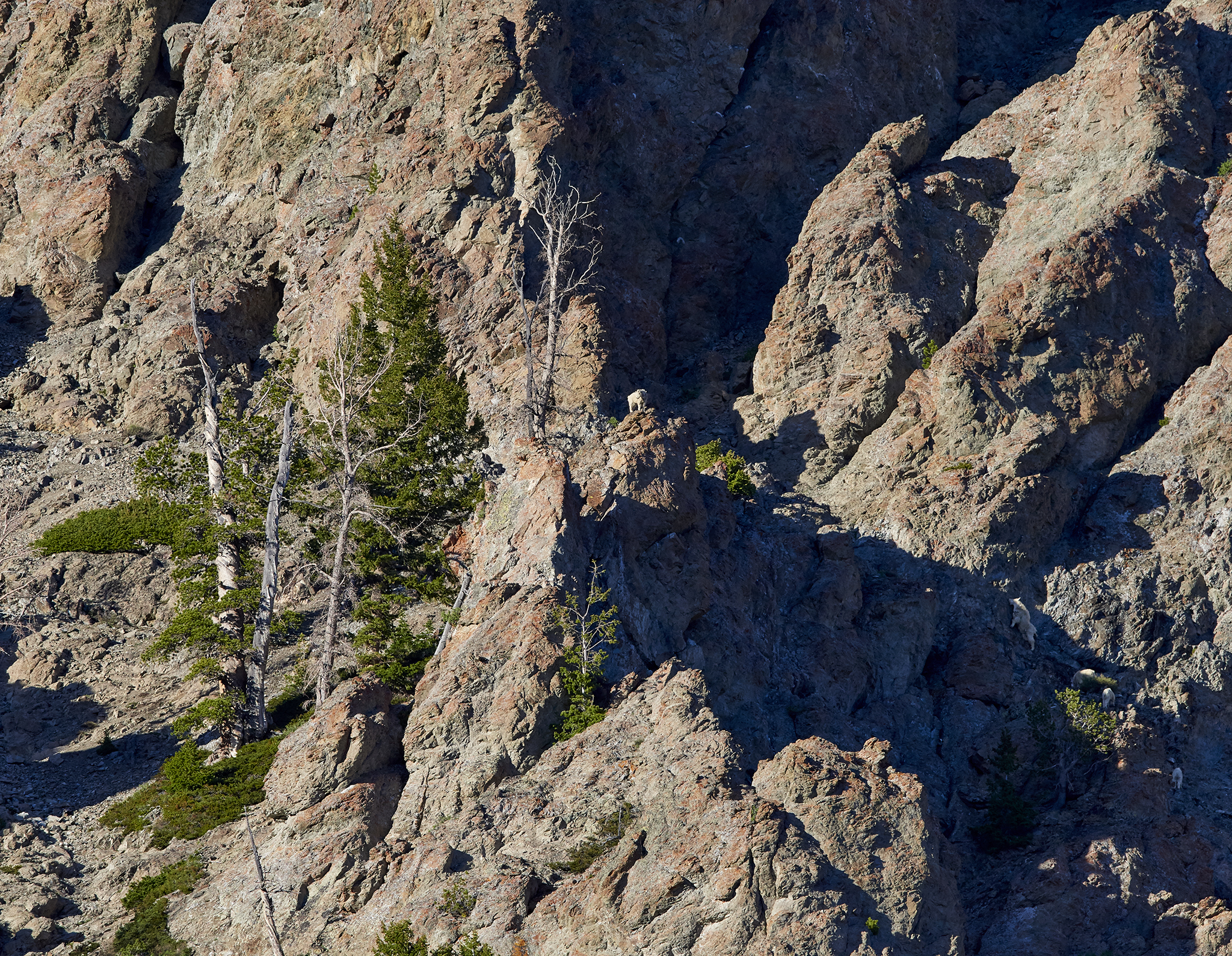
Viewing a two week-old Baby Mountain Goat following Mom through the steep and rocky terrain is an amazing sight to behold.
Lift-off © Jeffrey H. Lubeck – MESH Art LLC – all rights reserved.
Airborne © Jeffrey H. Lubeck – MESH Art LLC – all rights reserved.
Sticking the Landing © Jeffrey H. Lubeck – MESH Art LLC – all rights reserved.
Movin’ On © Jeffrey H. Lubeck – MESH Art LLC – all rights reserved.
The Mountain Goat is constantly on the lookout for minerals as part of their daily diet. Mountain Goats will go to great lengths to get a taste of the minerals. In the image below, mom and baby are scratching and licking the wall to expose and lick minerals in the rock.

While the terrain in which I travel and photograph could easily be classified as harsh and demanding, I would describe it as magnificent.
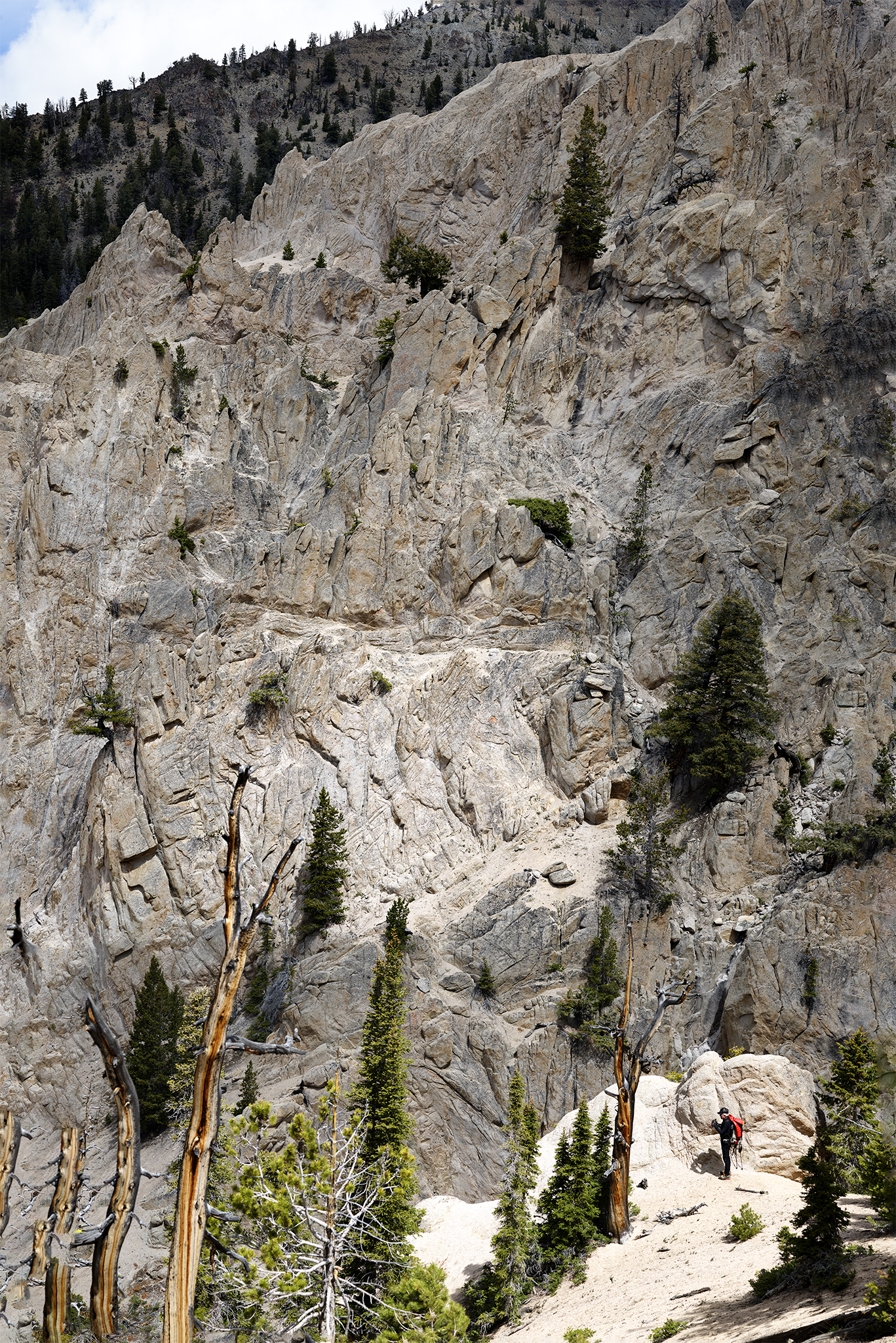
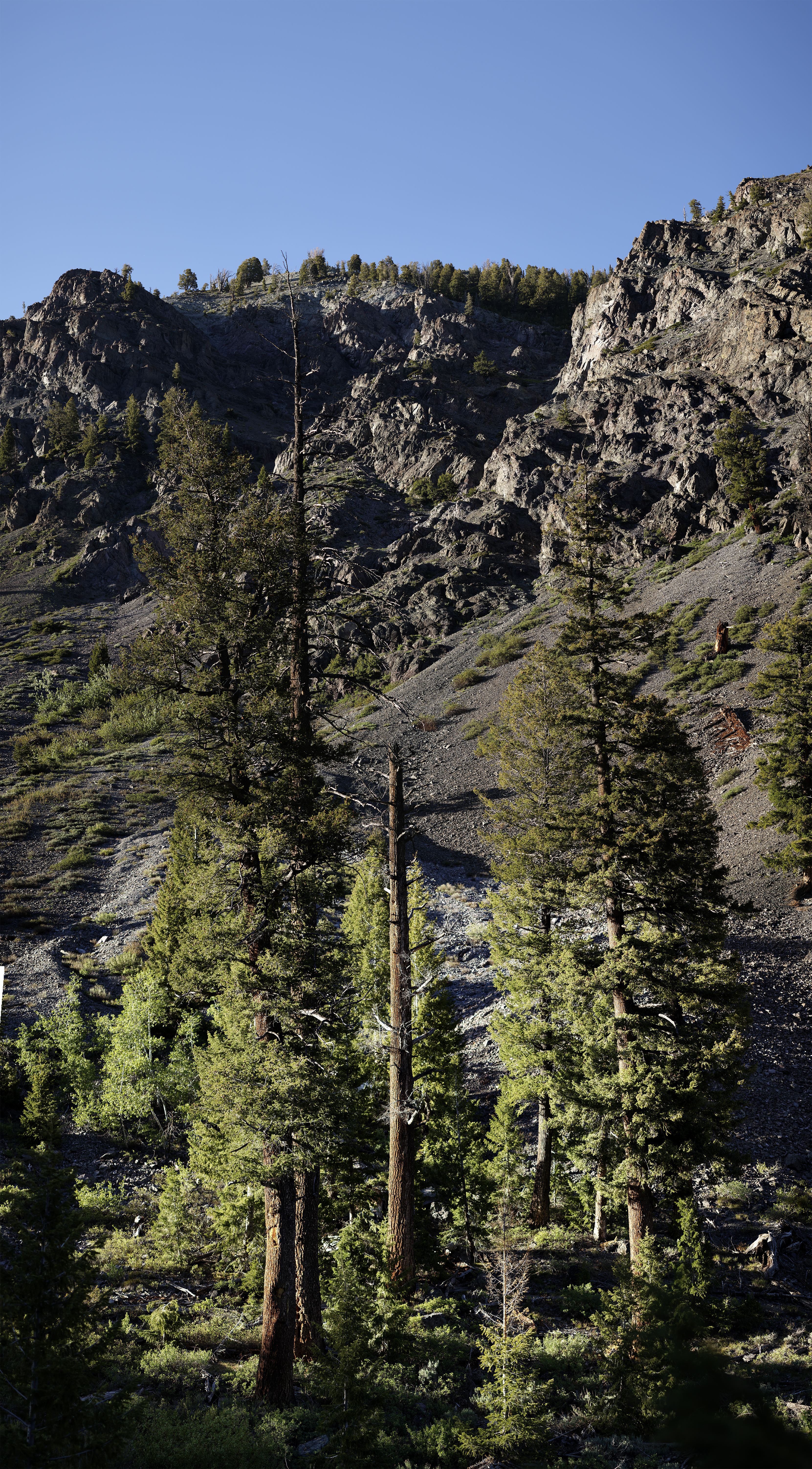
Some of the places from which I photograph and successfully capture images are on established trails. While not necessarily the most heavily travelled, the trails are well known and covered by people who like to hike. The Mountain Goats are present and visible to the naked eye if you are looking up and around. Some of these spots are literally a few feet from the trailhead. While there are no closeup’s to be had, if you have binoculars, a spotting scope, or a 1000 MM lens attached to your camera you can look into the Mountain Goat’s eyes.
Some of the places from which I photograph and successfully capture images are not on established trails. They can be reached if you are competent in off-trail back-country travel at high elevation. If you can move with competence through terrain at 25-40 degrees in angle for 2,000 to 3,000 vertical feet of gain at high elevation you can encounter Mountain Goats from 5 feet to 1/2 mile away. Also, you can observe them for longer periods of time if you are exceptionally quiet in movement and communicate with others with hand signals and or muted sound effects.
Some of the places from which I photograph and successfully capture images occurs in highly challenging terrain. These spots are not to be attempted alone – at least in my opinion.
For the past number of years, I have had the fortune to work with arguably the best Mountain Goat guide and enthusiastic Adventurist in the world. It should be noted that many – in the town in which I live – can truly lay claim to be the best in the world in their respective discipline. These two were my friends prior to attempting this endeavor and as luck would have it they remain so to this day.
After a few years of operating as a photographic shoot team we have become good. My thinking is we could eventually become superb.
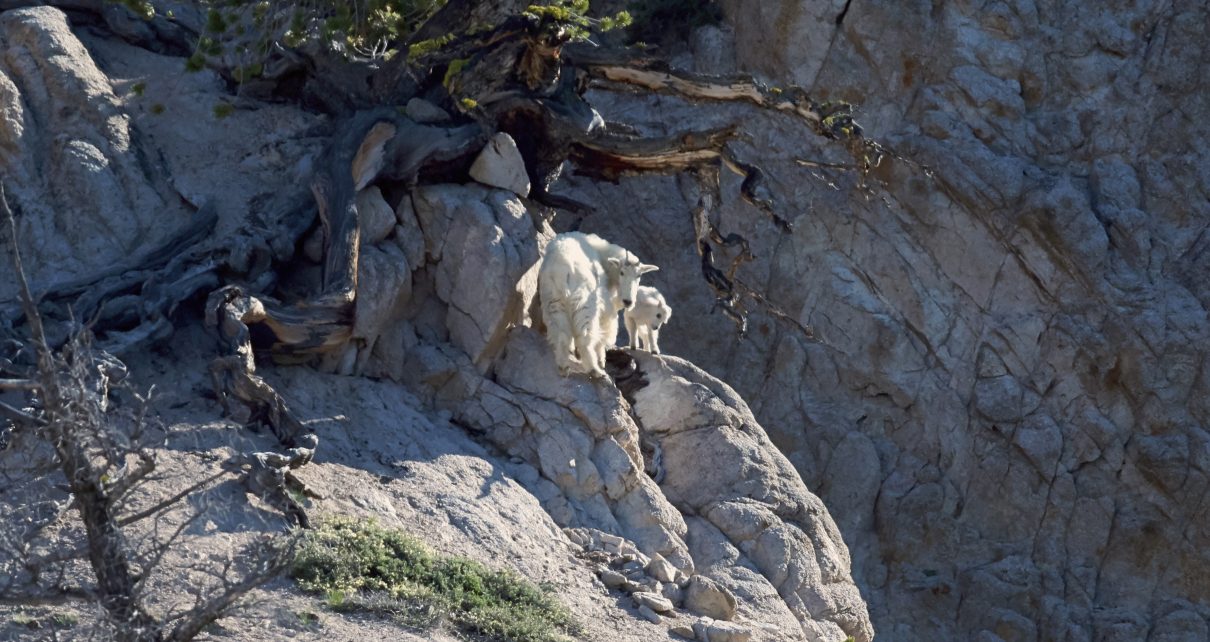
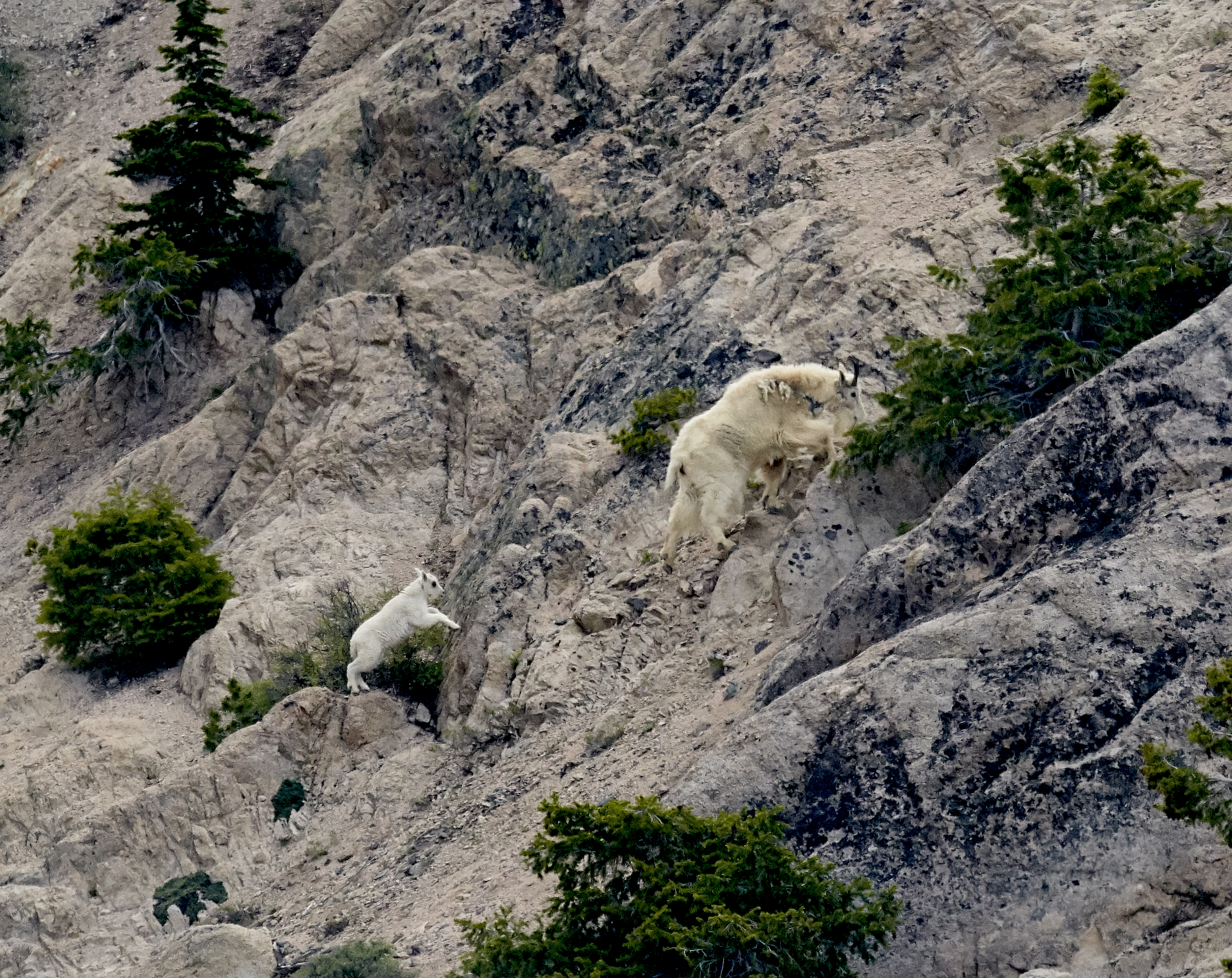
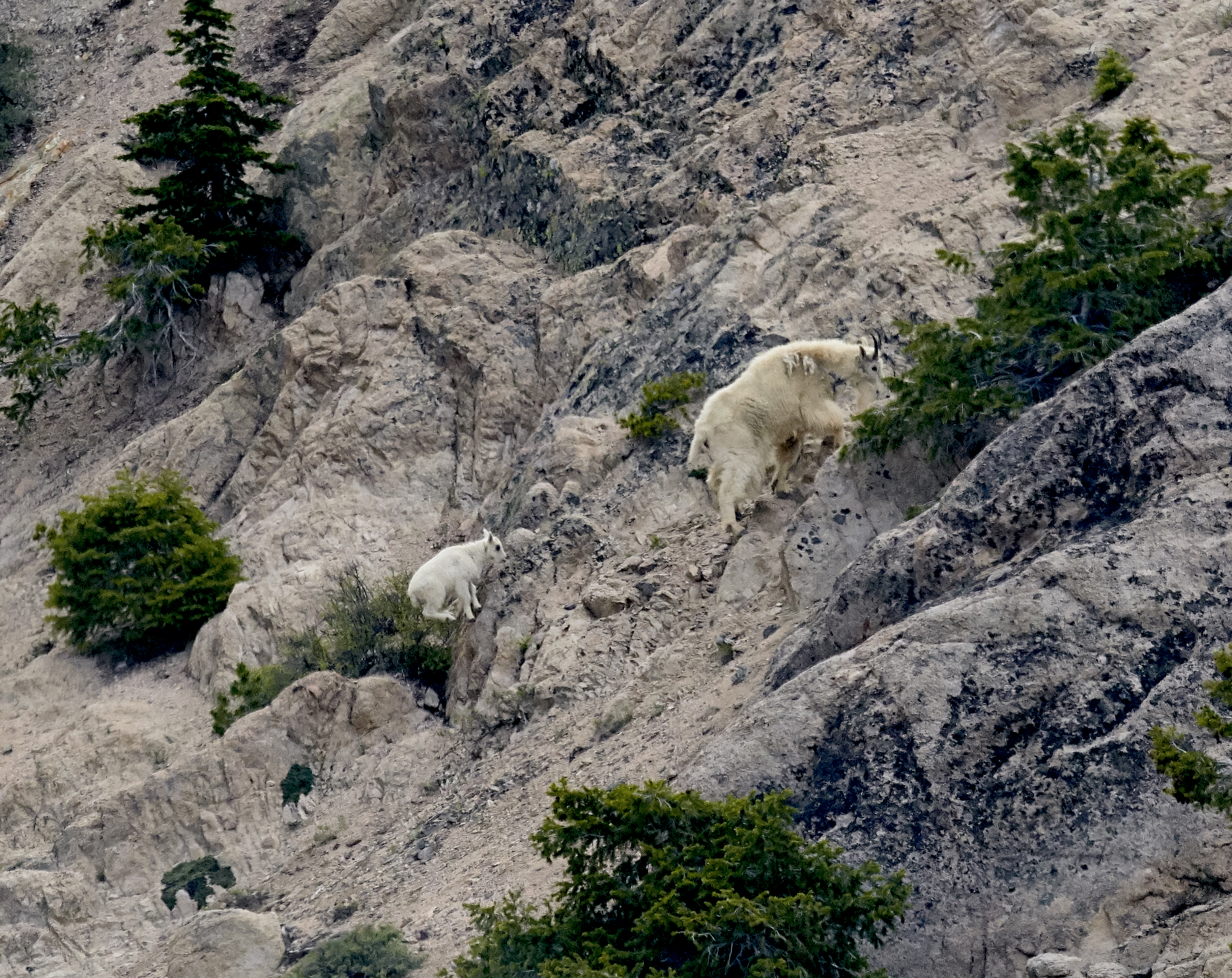
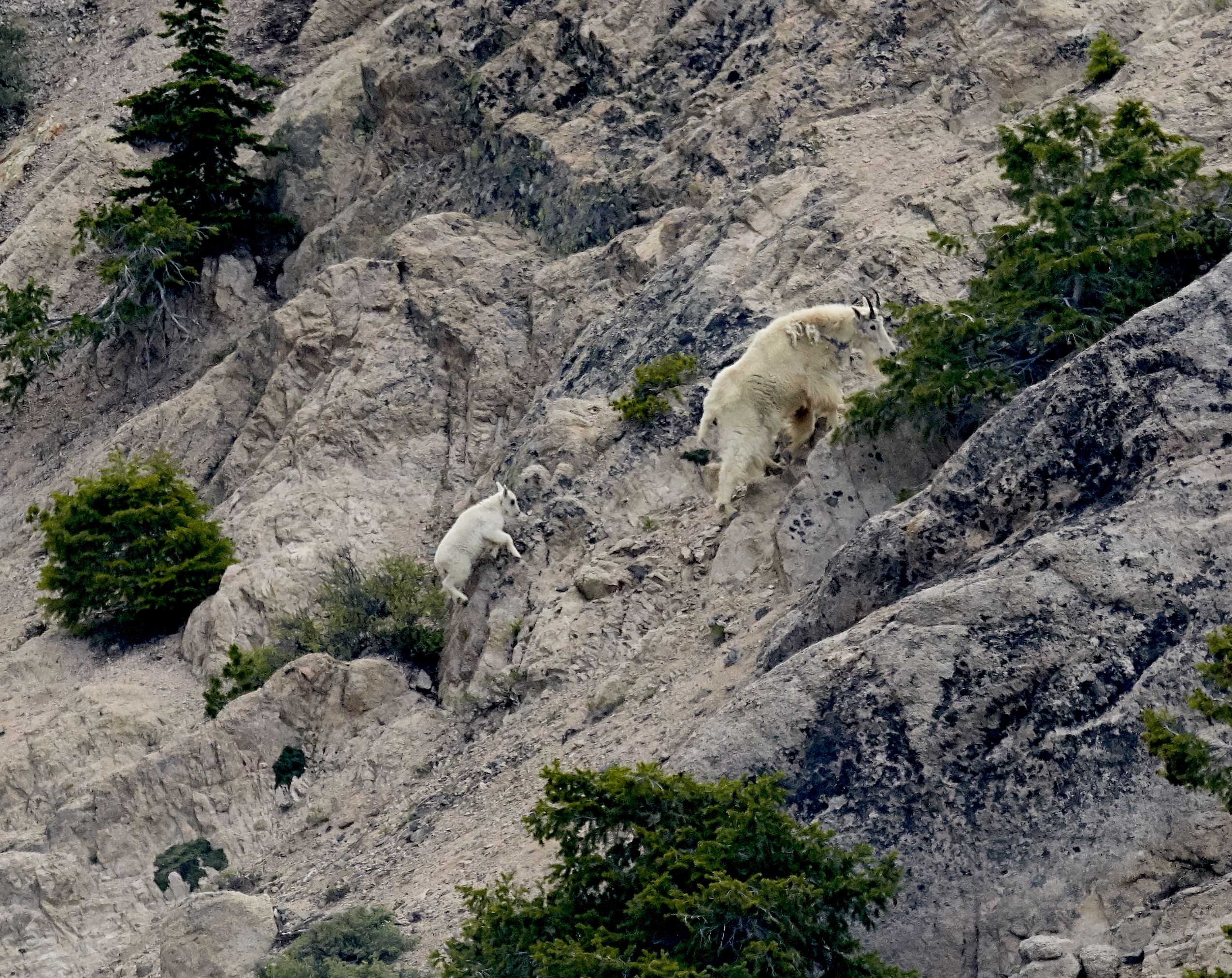
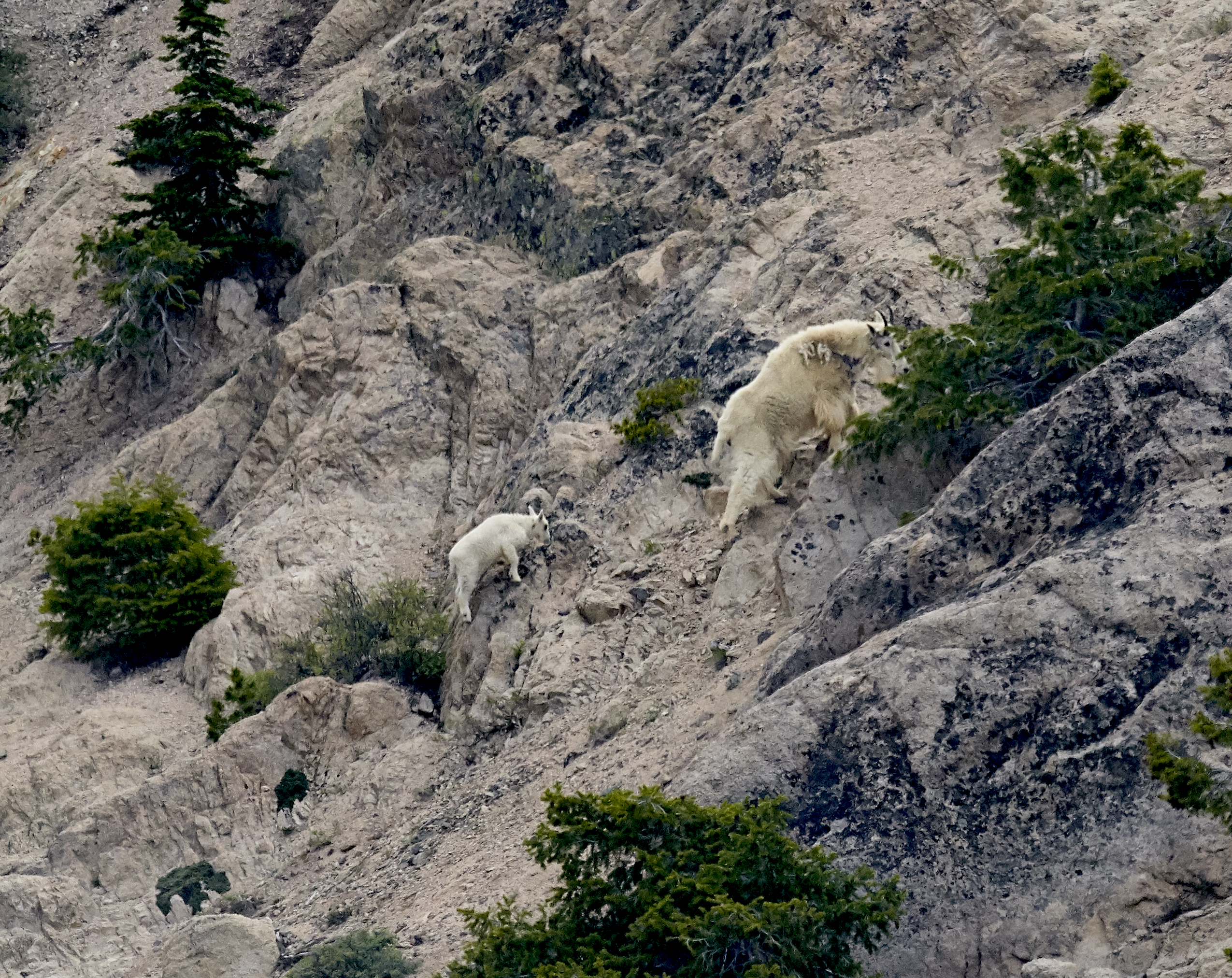
Jeff
Those pictures are outrageous. Although we hiked together years ago, I have no chance at that terrain now. Thanks for the vicarious adventure!
Mike